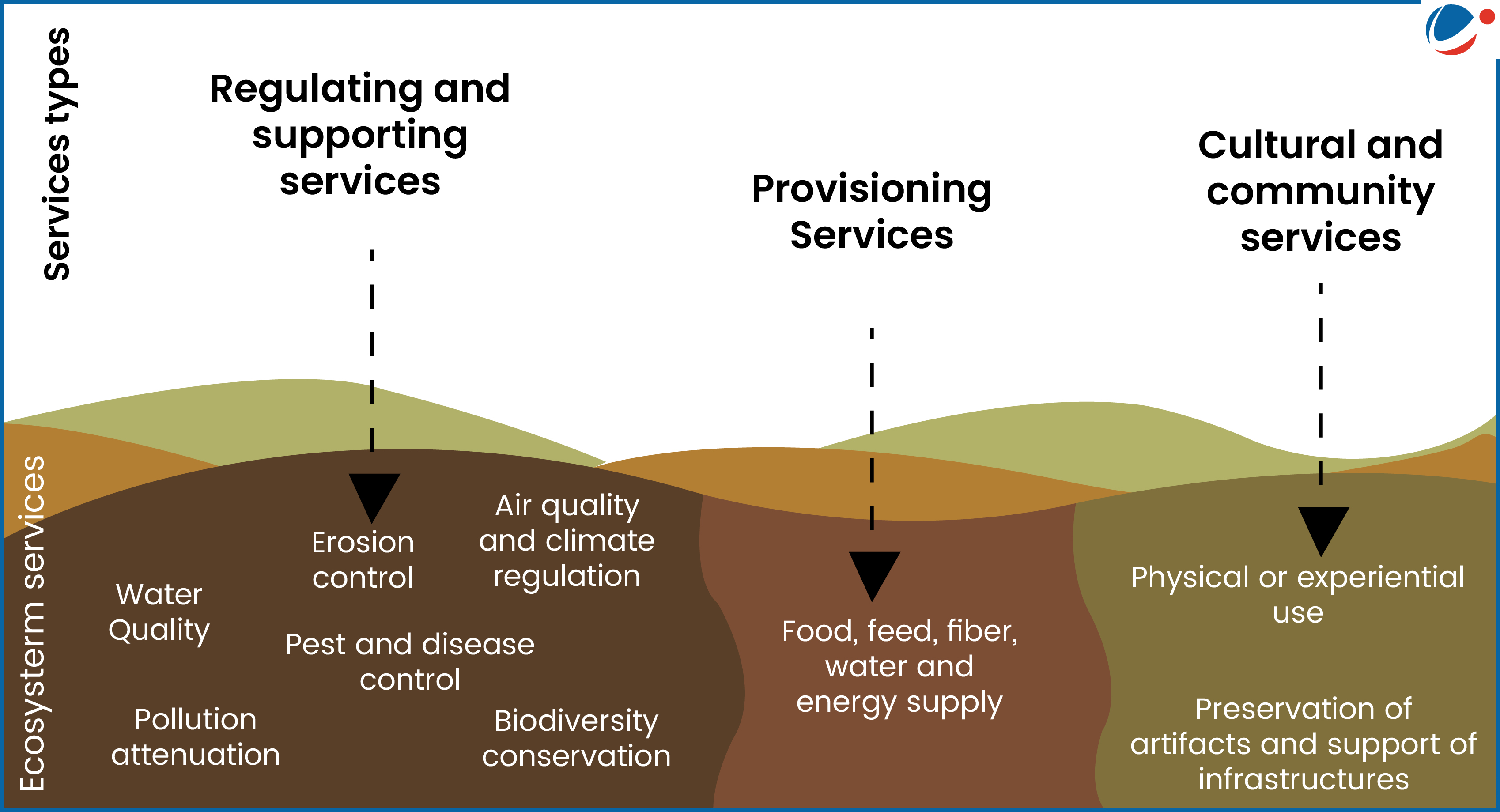The study found that soil pollution by toxic metals has considerable impacts on food production and food safety and areas at most risk include southern China, northern and central India, and the Middle East.
Metal Pollution in Soil
- Toxic metals including heavy metals and metalloids are nondegradable and therefore accumulate over decadal timescales in soils
- Heavy metals are namely arsenic (As), cadmium (Cd), chromium (Cr), mercury (Hg), lead (Pb), copper (Cu), zinc (Zn), nickel (Ni).
- Cadmium, the most widespread pollutant, exceeds safe levels in 9% of soils globally.
- There are two main sources of toxic metals in soil:
- Geogenic: Through bedrocks (soil parent materials) and atmospheric transportation after volcanic emissions and wind erosion.
- Anthropogenic: Agricultural (irrigation, phosphorus fertilizers etc.), household (paints, batteries etc.), and industrial (mining, metal smelting etc.) activities.

Consequences of soil pollution
- Ecosystem Disruption: Affects the primary productivity of natural and agricultural ecosystems and leads to the overall loss of soil ecosystem services (refer infographic).
- Human health: Exposure to soil pollution contributes to more than 500,000 premature deaths globally each year.
- Bioaccumulation: Bioaccumulation in organisms can render elements toxic in the human food chain.
- Nutrient Imbalance: Due to alteration in soil biodiversity and loads of nutrients.



